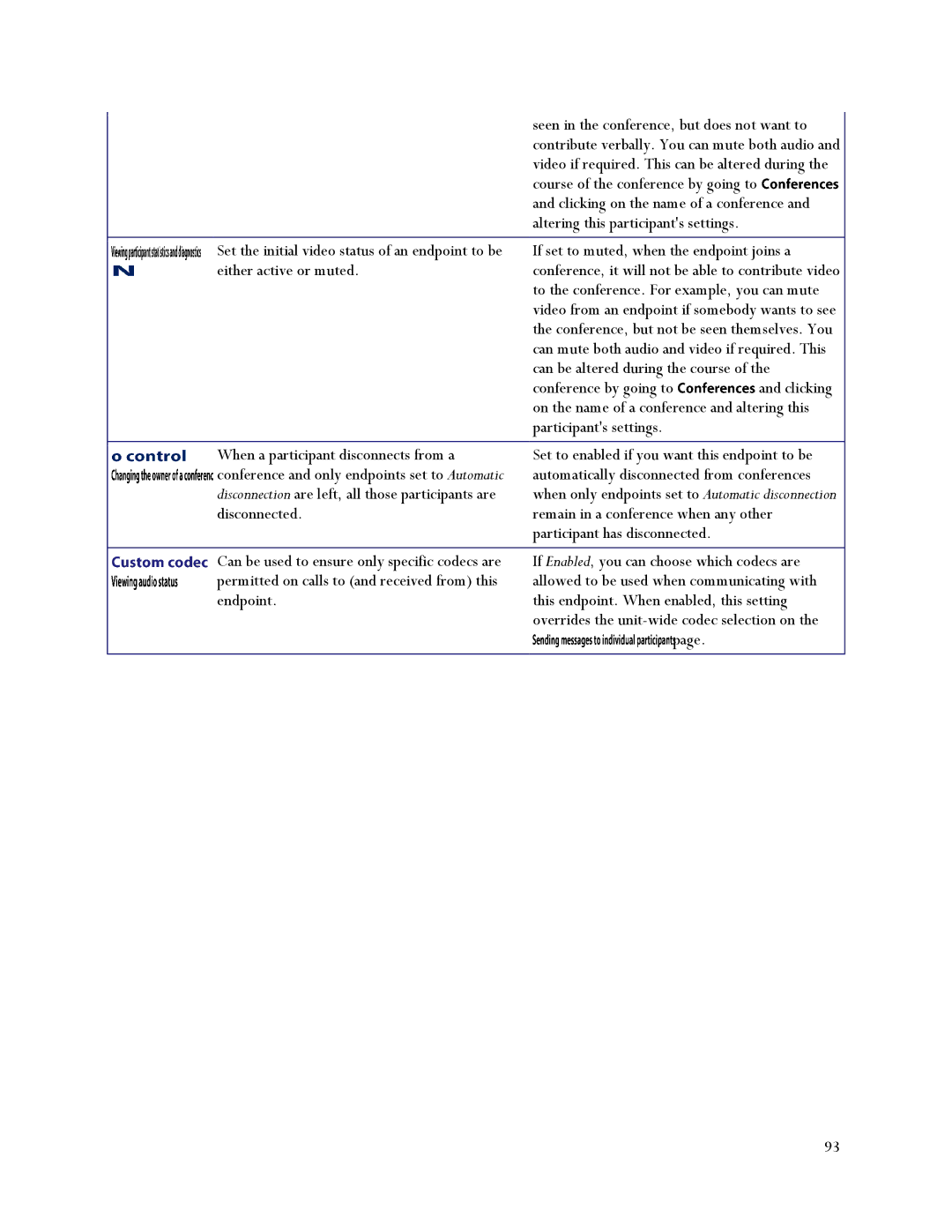
| seen in the conference, but does not want to | |
| contribute verbally. You can mute both audio and | |
| video if required. This can be altered during the | |
| course of the conference by going to |
|
| and clicking on the name of a conference and | |
| altering this participant's settings. |
|
|
| |
Set the initial video status of an endpoint to be | If set to muted, when the endpoint joins a | |
either active or muted. | conference, it will not be able to contribute video | |
| to the conference. For example, you can mute | |
| video from an endpoint if somebody wants to see | |
| the conference, but not be seen themselves. You | |
| can mute both audio and video if required. This | |
| can be altered during the course of the | |
| conference by going to | and clicking |
| on the name of a conference and altering this | |
| participant's settings. |
|
|
| |
When a participant disconnects from a | Set to enabled if you want this endpoint to be | |
conference and only endpoints set to Automatic | automatically disconnected from conferences | |
disconnection are left, all those participants are | when only endpoints set to Automatic disconnection | |
disconnected. | remain in a conference when any other | |
| participant has disconnected. |
|
|
| |
Can be used to ensure only specific codecs are | If Enabled, you can choose which codecs are | |
permitted on calls to (and received from) this | allowed to be used when communicating with | |
endpoint. | this endpoint. When enabled, this setting | |
| overrides the | |
| page. |
|
|
|
|
93
